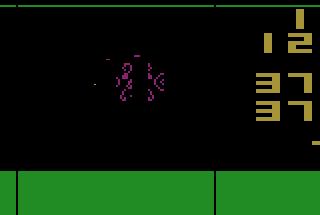 The subject of s-e-x was never discussed at my house when I was growing up. Consequently, I, like many of my school pals, had to rely on the playground network. As I matured, I explored and rejected many theories in my personal quest for the truth. I had a hard time believing that Storks made visits to my neighborhood in rural Wyoming and I know that there wasn't a cabbage patch around for many miles.
The subject of s-e-x was never discussed at my house when I was growing up. Consequently, I, like many of my school pals, had to rely on the playground network. As I matured, I explored and rejected many theories in my personal quest for the truth. I had a hard time believing that Storks made visits to my neighborhood in rural Wyoming and I know that there wasn't a cabbage patch around for many miles.
The most improbable hypothesis was presented by my little brother, who also believed the ocean was salty from a man-made salt machine, who described a disgustingly bizarre process that I thought was too weird to be true. Later, one of my classmates smuggled a birthing pamphlet to school, complete with illustrations, that confirmed my little brothers story. How did he know?
How does this fit in with the birth of Video Games. Well, if you have an Atari 2600, you not only have a cool game machine, but you also have the first (and the only game console for that matter) that has one of the oldest known video games available for it. The extremely rare game cart by CommaVid called Video Life is a very cool simulation of this. To call Video Life a game is probably incorrect. Although fun, the game of Life is more a simulation of cellular automaton on an infinite quadratic grid (or a finite wrapping grid as is the case on the 2600). Each grid cell is either alive (on) or dead (off). The new state of each cell is computed in discrete time steps and is determined by it's old state and the sum of the alive cells among its surrounding 8 nearest neighbors cells. All these changes are simultaneously over the whole grid. The rules let a cell in the next generation live if the cell is either surrounded by either 2 or 3 live cells, the survive condition. A dead cell flips into the alive state in the next generation if it is surrounded by exactly 3 living cells, the born condition. Otherwise it dies or stays dead. Therefore a given initial pattern, a collection of alive cells in a universe of dead cells, develops according to these rules over the generations and produces various configurations. The rules were invented in 1970 by a mathematician, J.H. Conway, to demonstrate that the cellular automaton is on the boundary between unbounded growth and decay. It was proven that it's chaotic behavior is unpredictable and it could be used to build a universal constructor. One of the important open problems is whether a sufficient large random populated universe will develop self-organization structures.
Video Life on the Atari 2600 contains some options that make it unique amongst all the carts ever made for the system. First of all, it contains additional ram and a unique bank switching scheme to address this ram. The playfield is made up of 3 distinct parts. The main part being the dot display (cells) and a magnified view of a specific area of the dot display, which is very useful for defining patterns. There is also a generation number displayed which specifies the number of generations a pattern has gone through. Using the right joystick you can stop the generating cells. Pushing the fire button will continue the sequence. Interestingly, while in pause mode, the left joystick can be used to modify the patterns.
Video Life can be played hap-hazardly with little or no thought about the underlying rules. Understanding the rules will, however, help you develop an intuition about finding interesting patterns. The patterns are what make Video Life so interesting. As you do research, you'll read terms like "Puffer Train", "Glider", "Shuttle", "R Heptomino" ,etc.. There has been a slew of research into the unique patterns over the years to study artificial intelligence and cell division. Some patterns produce interesting looking results, while others stabilize after numerous iterations.
Why is this cart so rare? It is this authorís understanding that Video Life was only offered to the customers who originally purchased Magic Card, also by CommaVid. Magic Card is a programming utility cart for the Atari 2600, allowing users to input programs. Curiously enough, the manual that came with Magic Card contains a source listing for Video Life. I am not sure if it is the same game as the released cart.. It would be interesting to find out. Now if I could only clone a Magic Card, then Iíd be set.
I suppose that if a modern version of Video Life were to appear on current systems it might be called Video Life: The Home Gene-Splicing Kit - A crazy new way to mix DNA. Using Syzygy Cybernetics gene-splicing technology to select face parts, mix them up and create hilarious mutants of the human race.
In any event, I am fascinated by this title for the Atari 2600. It may not teach you everything you want to know about sex, but you can learn about the fundamentals of L-I-F-E and that is what it is all about. Sex and videogames. Does life get any better than this?
